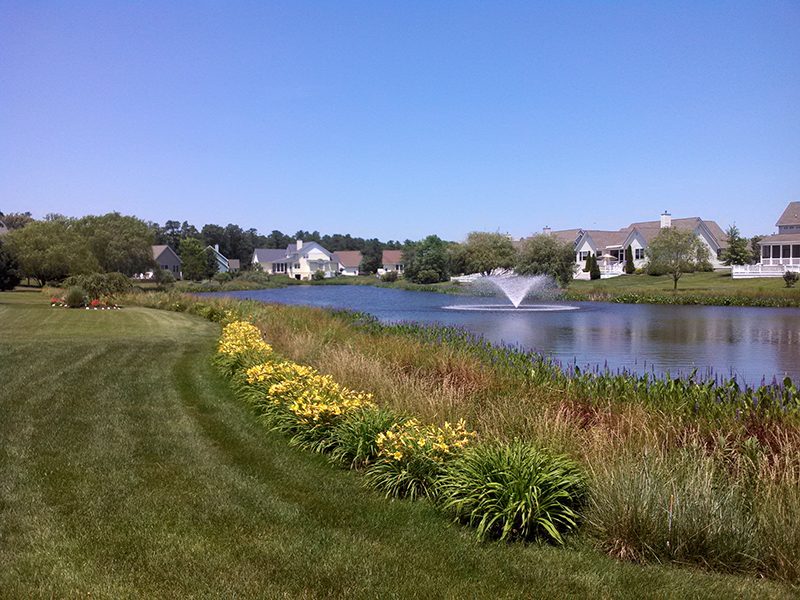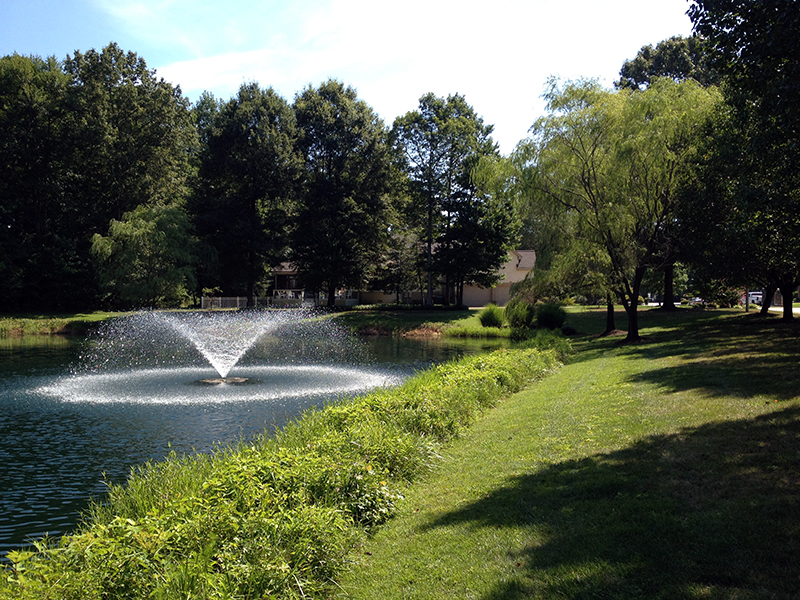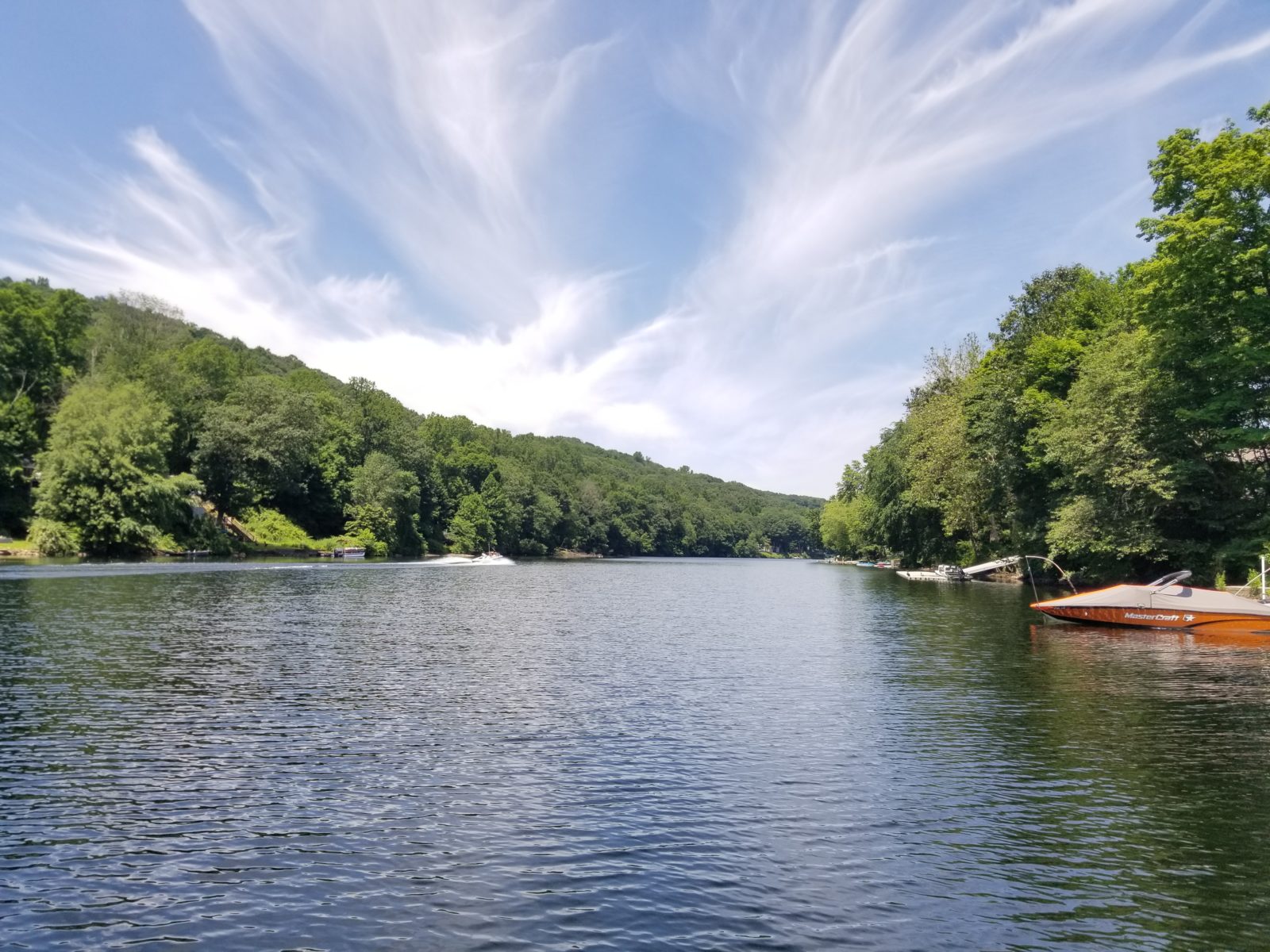Integrated Pest Management (IPM) for Ponds
March 9th, 2016
AS SEEN IN Groundwork Magazine: Written by Industry Expert, Brad Harris, Forestry Biologist & Territory Leader
There are many similarities when managing terrestrial and aquatic sites for pest control. And, as turf and landscape professionals, you are familiar with Integrated Pest Management (IPM) programs for your turf and ornamental plants. Turf and ecological research has come a long way in past decades, and simply treating a pest with an appropriate pesticide is no longer considered a sound practice, both for the turf and for the environment. Research has shown that many pest outbreaks can be controlled, reduced, or prevented altogether by using techniques other than just chemical applications. An effective IPM program does not exclude pesticide use but rather utilizes as many cultural, mechanical/physical, and biological control methods in combination with chemical control techniques to control a specific pest population.
 The goal of IPM is to prevent or reduce pest population outbreaks using all control methods possible, which in theory should reduce the amount of pesticides needed to control the target pest population. Continued pesticide applications repeated over and over, without implementing other IPM methods, can lead to long-term economic and environmental impacts that are not yet fully understood. Implementing an effective IPM program will typically reduce the number of chemical applications and rates required to control certain pests, thus reducing the likelihood of the target pest developing resistance. Reducing resistance of a pest to a pesticide should also result in a long-term cost savings and fewer environmental impacts to the target areas.
The goal of IPM is to prevent or reduce pest population outbreaks using all control methods possible, which in theory should reduce the amount of pesticides needed to control the target pest population. Continued pesticide applications repeated over and over, without implementing other IPM methods, can lead to long-term economic and environmental impacts that are not yet fully understood. Implementing an effective IPM program will typically reduce the number of chemical applications and rates required to control certain pests, thus reducing the likelihood of the target pest developing resistance. Reducing resistance of a pest to a pesticide should also result in a long-term cost savings and fewer environmental impacts to the target areas.
An effective, site-specific IPM program should be considered not only for turf areas, but also for ponds. In fact, depending on which state you live in, implementing an IPM plan may be a requirement as part of the National Pollutant Discharge Elimination System-Pesticide General Permit (NPDES-PGP) that went into effect in late 2011. Some states require that an IPM plan be implemented or considered for each water body, and that the pond or lake owner can be held responsible for any adverse effects created by the actions of the owner as well as the actions of any contractors hired by the pond or lake owner to work on the site. Therefore, it is imperative that a pond or lake owner and any hired lake management company be familiar with this permit.
One solution that has not made it to the forefront of the aquatic industry, and may never, is to plant genetically improved plants. However, planting or introducing native vegetation and fish to a pond can help keep exotic and invasive vegetation from becoming established and can aid in keeping the pond balanced. Having an aquatic vegetative buffer around the perimeter of the pond can reduce erosion and sedimentation issues as well as help the uptake of excess nutrients that would otherwise enter the water column, which can lead to potentially severe aquatic weed and algae issues.
Adding physical or mechanical IPM methods to your water body is very similar to adding mechanical or physical turf IPM strategies. There are many physical and mechanical IPM methods that can be added to your pond. These include aeration, pond dye, ultrasonic algae control systems, mechanical harvesting, and water level management, among others. Determining which of these will be best suited for your pond and budget will be specific to each site.
Another physical IPM method turf professionals may implement is adding a drainage system to an area that is known to hold water and requires repeated fungicide treatments. Similarly, if a pond is having issues with floating weeds, the pond owner and lake management company may alter the existing outlet structure to reduce the amount of herbicide applications needed for adequate control of that weed.
Just as keeping the microorganisms in the soil healthy and balanced is essential for maintaining a healthy turf, the same applies for maintaining the water quality in a pond. Adding beneficial bacteria to a pond will help metabolize excess nutrients and reduce the likelihood of severe algae blooms and aquatic weed infestations. This, in turn, will reduce the amount of algaecides and aquatic herbicides needed to combat these issues.
 Another example of biological control for ponds involves using triploid grass carp. Triploid grass carp are sterile fish that consume many submersed aquatic weeds considered problematic in water bodies. Adding triploid grass carp to a pond will typically reduce the amount of aquatic herbicides required to control certain aquatic weeds. Minnows can be also be stocked in ponds to help control mosquito populations, thus potentially reducing the amount of insecticides needed to control them in the summer. Please consult with your lake and pond professional or fisheries biologist, as stocking regulations vary from state to state.
Another example of biological control for ponds involves using triploid grass carp. Triploid grass carp are sterile fish that consume many submersed aquatic weeds considered problematic in water bodies. Adding triploid grass carp to a pond will typically reduce the amount of aquatic herbicides required to control certain aquatic weeds. Minnows can be also be stocked in ponds to help control mosquito populations, thus potentially reducing the amount of insecticides needed to control them in the summer. Please consult with your lake and pond professional or fisheries biologist, as stocking regulations vary from state to state.
Finally, properly applied pesticides can play a critical role in an effective IPM plan. Chemical techniques can help reduce resistance and the overall number of applications needed. Using the same pesticide repeatedly can lead to the pest developing resistance to the pesticide. Therefore, rotating the algaecides and aquatic herbicides used in your pond will reduce the likelihood of the target species developing resistance to a specific pesticide, which can ultimately make the target pest harder to control. Being able to correctly identify target pests and knowing which products are available to control the specific pests are key to integrating chemical applications into an effective IPM program. Knowing and utilizing the proper and effective application rates will also help in gaining control and reducing the chances of pesticide resistance and retreatments.
An effective IPM program is site specific and uses all available control methods to help balance pest populations. Anyone who has been working in the turf or aquatic industry knows that a balanced ecosystem is generally a healthy one. The theory of IPM is not to completely eradicate a pest, but rather to keep the populations balanced and controlled using all methods and techniques available.
Much is still misunderstood in terrestrial and aquatic ecosystems, and an IPM program will minimize some of the detrimental effects that may arise in the future as more research is done on pest populations and pesticide resistance. Please call a local pond and lake management company to discuss an aquatic IPM program for ponds in need of a healthy balance.
Contact the experts at 888-480-5253 for all of your lake, pond and fisheries management needs.
Brad Harris is Forestry Biologist and Territory Leader with SOLitude Lake Management. SOLitude Lake Management has been committed to providing full service lake and pond management services that improve water quality, preserve natural resources, and reduce our environmental footprint. Lake, pond and fisheries management services and consulting, and aquatic products are available nationwide. Learn more about SOLitude Lake Management and purchase products at www.solitudelakemanagement.com.










